The Physical Rules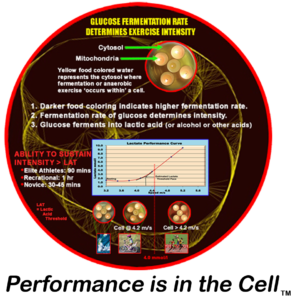
of Nutrition, Metabolism, and Exercise Science
Reference source/supplementary reading for lecture Your Brain on Collision Sports
 Brain Facts and Figures
Brain Facts and Figures
direct link to this publication: http://faculty.washington.edu/chudler/facts.html
These data were obtained from several textbooks. All numbers are for humans unless otherwise indicated.
http://faculty.washington.edu/chudler/facts.html
[Return to Eric H. Chudler’s Home Page]
Eric H. Chudler, Ph.D.
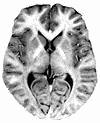 Executive Director, Center for Sensorimotor Neural Engineering;
Executive Director, Center for Sensorimotor Neural Engineering;
Research Associate Professor, Department of Bioengineering
Research Associate Professor, Department of Anesthesiology & Pain Medicine
University of Washington
Seattle, WA 98195
email: chudler@u.washington.edu
Ph.D., Psychology, University of Washington, Seattle, 1985
M.S., Psychology, University of Washington, Seattle, 1983
B.S., Psychobiology, University of California, Los Angeles, 1980
This page was last modified on March 6, 2017.
| Table of Contents | |||
BRAIN |
NEURON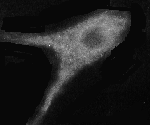 |
SPINAL CORD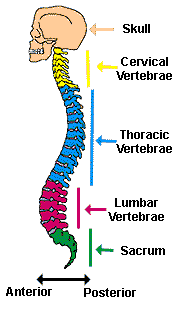 |
 |
SENSORY APPARATUS |
BLOOD SUPPLY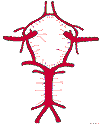 |
||
| Average Brain Weights (in grams) | ||||
| Species | Weight (g) | Species | Weight (g) | |
| adult human | 1,300 – 1,400 | newborn human | 350 – 400 | |
| sperm whale | 7,800 | fin whale | 6,930 | |
| elephant | 4,783 | humpback whale | 4,675 | |
| gray whale | 4,317 | killer whale | 5,620 | |
| bowhead whale | 2,738 | pilot whale | 2,670 | |
| bottle-nosed dolphin | 1,500 – 1,600 | walrus | 1,020 – 1,126 | |
| Pithecanthropus Man | 850 – 1,000 | camel | 762 | |
| giraffe | 680 | hippopotamus | 582 | |
| leopard seal | 542 | horse | 532 | |
| polar bear | 498 | gorilla | 465 – 540 | |
| cow | 425-458 | chimpanzee | 420 | |
| orangutan | 370 | California sea lion | 363 | |
| manatee | 360 | tiger | 263.5 | |
| lion | 240 | grizzly bear | 234 | |
| pig | 180 | jaguar | 157 | |
| sheep | 140 | baboon | 137 | |
| rhesus monkey | 90-97 | dog (beagle) | 72 | |
| aardvark | 72 | beaver | 45 | |
| shark (great white) | 34 | shark (nurse) | 32 | |
| cat | 30 | porcupine | 25 | |
| squirrel monkey | 22 | marmot | 17 | |
| rabbit | 10-13 | platypus | 9 | |
| alligator | 8.4 | squirrel | 7.6 | |
| opossum | 6 | flying lemur | 6 | |
| fairy anteater | 4.4 | guinea pig | 4 | |
| ring-necked pheasant | 4.0 | hedgehog | 3.35 | |
| tree shrew | 3 | fairy armadillo | 2.5 | |
| owl | 2.2 | grey partridge | 1.9 | |
| rat (400 g body weight) | 2 | hamster | 1.4 | |
| elephant shrew | 1.3 | house sparrow | 1.0 | |
| european quail | 0.9 | turtle | 0.3-0.7 | |
| bull frog | 0.24 | viper | 0.1 | |
| goldfish | 0.097 | green lizard | 0.08 | |
Reference for many of these brain weights:
|
||||
% brain of total body weight (150 pound human) = 2%
Average brain width = 140 mm
Average brain length = 167 mm
Average brain height = 93 mm
Intracranial contents by volume (1,700 ml, 100%): brain = 1,400 ml (80%); blood = 150 ml (10%); cerebrospinal fluid = 150 ml (10%) (from Rengachary, S.S. and Ellenbogen, R.G., editors, Principles of Neurosurgery, Edinburgh: Elsevier Mosby, 2005)
Average number of neurons in the brain = 100 billion (Source: Various textbooks.)
Average number of neurons in the brain = 86 billion (Source: Frederico Azevedo et al., Equal numbers of neuronal and nonneuronal cells make the human brain an isometrically scaled-up primate brain. J. Comp. Neurol., 513: 532-541, 2009.)
The octopus nervous system has about 500,000,000 neurons, with two-thirds of these neurons located in the arms of the octopus. (from Hochner B, Shomrat T, Fiorito G., The octopus: a model for a comparative analysis of the evolution of learning and memory mechanisms. Biol Bull. 2006 Jun;210(3):308-317.
Number of neurons in honey bee brain = 950,000 (from Menzel, R. and Giurfa, M., Cognitive architecture of a mini-brain: the honeybee, Trd. Cog. Sci., 5:62-71, 2001.)
Number of neurons in Aplysia nervous system = 18,000-20,000
Number of neurons in each segmental ganglia in the leech = 350
Volume of the brain of a locust = 6mm3 (from The Neurobiology of the Insect Brain, Burrows, M., 1996)
Ratio of the volume of grey matter to white matter in the cerebral hemipheres (20 yrs. old) = 1.3 (Miller, A.K., Alston, R.L. and Corsellis, J.A., Variation with age in the volumes of grey and white matter in the cerebral hemispheres of man: measurements with an image analyser, Neuropathol Appl Neurobiol., 6:119-132, 1980)
Ratio of the volume of grey matter to white matter in the cerebral hemipheres (50 yrs. old) = 1.1 (Miller et al., 1980)
Ratio of the volume of grey matter to white matter in the cerebral hemipheres (100 yrs. old) = 1.5 (Miller et al., 1980)
% of cerebral oxygen consumption by white matter = 6%
% of cerebral oxygen consumption by gray matter = 94%
Ratio of glial cells to neurons in the brain = 1:1 (Reference 1 and Reference 2)
(For more information about the number of neurons in the brain, see R.W. Williams and K. Herrup, Ann. Review Neuroscience, 11:423-453, 1988)
Number of neocortical neurons (females) = 19.3 billion (Pakkenberg, B., Pelvig, D., Marner,L., Bundgaard, M.J., Gundersen, H.J.G., Nyengaard, J.R. and Regeur, L. Aging and the human neocortex. Exp. Gerontology, 38:95-99, 2003 and Pakkenberg, B. and Gundersen, H.J.G. Neocortical neuron number in humans: effect of sex and age. J. Comp. Neurology, 384:312-320, 1997.)
Number of neocortical neurons (males) = 22.8 billion (Pakkenberg et al., 1997; 2003)
Average loss of neocortical neurons = 85,000 per day (~31 million per year) (Pakkenberg et al., 1997; 2003)
Average loss of neocortical neurons = 1 per second (Pakkenberg et al., 1997; 2003)
Average number of neocortical glial cells (young adults ) = 39 billion (Pakkenberg et al., 1997; 2003)
Average number of neocortical glial cells (older adults) =36 billion (Pakkenberg et al., 1997; 2003)
Number of neurons in cerebral cortex (rat) = 21 million (Korbo, L., et al., J. Neurosci Methods, 31:93-100, 1990)
Length of myelinated nerve fibers in brain = 150,000-180,000 km (Pakkenberg et al., 1997; 2003)
Number of synapses in cortex = 0.15 quadrillion (Pakkenberg et al., 1997; 2003)
Difference number of neurons in the right and left hemispheres = 186 million MORE neurons on left side than right side (Pakkenberg et al., 1997; 2003)
| Proportion by Volume (%) | ||
| Rat | Human | |
| Cerebral Cortex | 31 | 77 |
| Diencephalon | 7 | 4 |
| Midbrain | 6 | 4 |
| Hindbrain | 7 | 2 |
| Cerebellum | 10 | 10 |
| Spinal Cord | 35 | 2 |
| (Reference: Trends in Neurosciences, 18:471-474, 1995) | ||
| Composition of Brain and Muscle | ||
| Skeletal Muscle (%) | Whole Brain (%) | |
| Water | 75 | 77 to 78 |
| Lipids | 5 | 10 to 12 |
| Protein | 18 to 20 | 8 |
| Carbohydrate | 1 | 1 |
| Soluble organic substances | 3 to 5 | 2 |
| Inorganic salts | 1 | 1 |
| (Reference: McIlwain, H. and Bachelard, H.S., Biochemistry and the Central Nervous System, Edinburgh: Churchill Livingstone, 1985) | ||
Total surface area of the cerebral cortex = 2,500 cm2 (2.5 ft2; A. Peters, and E.G. Jones, Cerebral Cortex, 1984)
Total surface area of the cerebral cortex (lesser shrew) = 0.8 cm2
Total surface area of the cerebral cortex (rat) = 6 cm2
Total surface area of the cerebral cortex (cat) = 83 cm2
Total surface area of the cerebral cortex (African elephant) = 6,300 cm2
Total surface area of the cerebral cortex (Bottlenosed dolphin) = 3,745 cm2 (S.H. Ridgway, The Cetacean Central Nervous System, p. 221)
Total surface area of the cerebral cortex (pilot whale) = 5,800 cm2
Total surface area of the cerebral cortex (false killer whale) = 7,400 cm2
(Reference for surface area figures: Nieuwenhuys, R., Ten Donkelaar, H.J. and Nicholson, C., The Central nervous System of Vertebrates, Vol. 3, Berlin: Springer, 1998)
Total number of neurons in cerebral cortex = 10 billion (from G.M. Shepherd, The Synaptic Organization of the Brain, 1998, p. 6). However, C. Koch lists the total number of neurons in the cerebral cortex at 20 billion (Biophysics of Computation. Information Processing in Single Neurons, New York: Oxford Univ. Press, 1999, page 87).
Total number of synapses in cerebral cortex = 60 trillion (yes, trillion) (from G.M. Shepherd, The Synaptic Organization of the Brain, 1998, p. 6). However, C. Koch lists the total synapses in the cerebral cortex at 240 trillion (Biophysics of Computation. Information Processing in Single Neurons, New York: Oxford Univ. Press, 1999, page 87).
Percentage of total cerebral cortex volume (human): frontal lobe = 41%; temporal lobe = 22%; parietal lobe = 19%; occipital lobe = 18%. (Kennedy et al., Cerebral Cortex, 8:372-384, 1998.)
Number of cortical layers = 6
Thickness of cerebral cortex = 1.5-4.5 mm
Thickness of cerebral cortex (Bottlenosed dolphin) = 1.3-1.8 mm (S.H. Ridgway, The Cetacean Central Nervous System, p. 221)
EEG – beta wave frequency = 13 to 30 Hz
EEG – alpha wave frequency = 8 to 13 Hz
EEG – theta wave frequency = 4 to 7 Hz
EEG – delta wave frequency = 0.5 to 4 Hz
World record, time without sleep = 264 hours (11 days) by Randy Gardner in 1965. Note: In Biopsychology (by J.P.J. Pinel, Boston: Allyn and Bacon, 2000, p. 322), the record for time awake is attributed to Mrs. Maureen Weston. She apparently spent 449 hours [18 days, 17 hours] awake in a rocking chair. The Guinness Book of World Records [1990] has the record belonging to Robert McDonald who spent 453 hours, 40 min in a rocking chair.
Time until unconsciousness after loss of blood supply to brain = 8-10 sec
Time until reflex loss after loss of blood supply to brain = 40-110 sec
Rate of neuron growth (early pregnancy) = 250,000 neurons/minute
Length of spiny terminals of a Purkinje cell = 40,700 micron
Number spines on a Purkinje cell dendritic branchlet = 61,000
Surface area of cerebellar cortex = 50,000 mm2 (from G.M. Shepherd, The Synaptic Organization of the Brain, 2004, p. 271)
Weight of adult cerebellum = 150 grams (Afifi, A.K. and Bergman, R.A., Functional Neuroanatomy, New York: McGraw-Hill, 1998)
Number of Purkinje cells = 15-26 million
Number of synapses made on a Purkinje cell = up to 200,000
Weight of hypothalamus = 4 g
Volume of suprachiasmatic nucleus = 0.3 mm3
Number of fibers in pyramidal tract above decussation = 1,100,000
Number of fibers in corpus callosum = 200,000,000 (Lunders, E., Thompson, P.M. and Toga, A.W., The Development of the Corpus Callosum in the Healthy Human Brain, The Journal of Neuroscience, 30:10985-10990, 2010.)
Area of the corpus callosum (midsagittal section) = 6.2 cm2
| Species | Cerebellum Weight (grams) | Body Weight (grams) |
| Mouse | 0.09 | 58 |
| Bat | 0.09 | 30 |
| Flying Fox | 0.3 | 130 |
| Pigeon | 0.4 | 500 |
| Guinea Pig | 0.9 | 485 |
| Squirrel | 1.5 | 350 |
| Chinchilla | 1.7 | 500 |
| Rabbit | 1.9 | 1,800 |
| Hare | 2.3 | 3,000 |
| Cat | 5.3 | 3,500 |
| Dog | 6.0 | 3,500 |
| Macaque | 7.8 | 6,000 |
| Sheep | 21.5 | 25,000 |
| Bovine | 35.7 | 300,000 |
| Human | 142 | 60,000 |
| Source: Sultan, F. and Braitenberg, V. Shapes and sizes of different mammalian cerebella. A study in quantitative comparative neuroanatomy. J. Hirnforsch., 34:79-92, 1993. | ||
Total volume of cerebrospinal fluid (adult) = 125-150 ml
Total volume of cerebrospinal fluid (infant) = 50 ml (Source: Aghababian, R., Essentials of Emergency Medicine, 2006)
Turnover of entire volume of cerebrospinal fluid = 3 to 4 times per day (from Kandel et al., 2000, p. 1296)
Rate of production of CSF = 0.35 ml/min (500 ml/day) (from Kandel et al., 2000, p. 1296)
pH of cerebrospinal fluid = 7.33 (from Kandel et al., 2000, p. 1296)
Specific gravity of cerebrospinal fluid = 1.007
Color of normal CSF = clear and colorless
White blood cell count in CSF = 0-3 per mm3
Red blood cell count in CSF = 0-5 per mm3
Normal intracranial pressure = 150 – 180 mm of water
| Composition of Serum and Cerebrospinal Fluid (CSF) | ||
| CSF | Serum | |
| Water (%) | 99 | 93 |
| Protein (mg/dl) | 35 | 7000 |
| Glucose (mg/dl) | 60 | 90 |
| Osmolarity (mOsm/l) | 295 | 295 |
| Na (meq/l) | 138 | 138 |
| K (meq/l) | 2.8 | 4.5 |
| Ca (meq/l) | 2.1 | 4.8 |
| Mg (meq/l) | 0.3 | 1.7 |
| Cl (meq/l) | 119 | 102 |
| pH | 7.33 | 7.41 |
| (Reference: Fishman, R.A. Cerebrospinal Fluid in Disease of the Nervous System. Philadelphia: Saunders, 1980) | ||
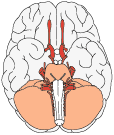 Number of cranial nerves = 12
Number of cranial nerves = 12
I- olfactory
II- optic
Number of fibers in human optic nerve = 1,200,000
Number of fibers in cat optic nerve = 119,000
Number of fibers in albino rat optic nerve = 74,800
Length of optic nerve = 50 mm (Reference: Kanski, J.J., Clinical Ophthalmology, 6th ed., Edinburgh: Elsevier, 2007.)
III- oculomotor
Number of fibers in oculomotor nerve = 25,000-35,000
IV- trochlear
Number of fibers in trochlear nerve = 2,000-3,500
Number of neurons in nucleus of the trochlear nerve = 2,000-3,500
V- trigeminal
Number of fibers in motor root of trigeminal nerve = 8,100
Number of fibers in sensory root of trigeminal nerve = 140,000
VI- abducens
Number of fibers in abducens nerve (at exit from brain stem) = 3,700
VII- facial
Number of fibers in facial nerve (at exit from brain stem) = 9,000-10,000
Length of nucleus of the facial nerve = 2 to 5.6 mm
Number of neurons in nucleus of the facial nerve = 7,000
VIII-vestibulocochlear
IX- glossopharyngeal
X- vagus
Length of dorsal motor nucleus of the vagus nerve = 10 mm
XI- spinal accessory
XII- hypoglossal
Number of neurons in nucleus of the hypoglossal nerve = 4,500-7,500
Length of nucleus of the hypoglossal nerve = 10 mm
Number of neurons in human spinal cord = 1 billion (from Kalat, J.W., Biological Psychology, 6th Edition, 1998, page 24)
Length of human spinal cord = 45 cm (male); 43 cm (female)
Length of human vertebral column (male) = 71 cm
Length of human vertebral column (female) = 61 cm
Length of cat spinal cord = 34 cm
Length of rabbit spinal cord = 18 cm
Length of the filum terminale = 15 cm
Cross sectional area of the spinal cord (C2 level) = 110 mm2
Cross sectional area of the spinal cord (C4 level) = 122 mm2
Cross sectional area of the spinal cord (C5 level) = 78 mm2
Cross sectional area of the spinal cord (C7 level) = 85 mm2
(Reference: Watson, C., Paxinos, G. and Kayalioglu, G., The Spinal Cord, Amsterdam: Elsevier, 2009)
Weight of human spinal cord = 35 g
Weight of rabbit spinal cord = 4 g
Weight of rat spinal cord (400 g body weight) = 0.7 g
Maximal circumference of cervical enlargement = 38 mm
Maximal circumference of lumbar enlargement = 35 mm
Pairs of Spinal Nerves = 31
Number of spinal cord segments (human)= 31
8 cervical segments
12 thoracic segments
5 lumbar segments
5 sacral segments
1 coccygeal segment
Number of Spinal Cord segments (rat)= 34
8 cervical segments
13 thoracic segments
6 lumbar segments
4 sacral segments
3 coccygeal segments
Audition
Surface area of the tympanic membrane = 85mm2 (Hearing: Its Physiology and Pathophysiology, A.R. Moller, Amsterdam: Elsevier, 2006)
Length of the eustachian tube = 3.5 to 3.9 cm (Hearing. Its Physiology and Pathophysiology, A.R. Moller, San Diego, Academic Press, 2000.)
Number of hair cells in cochlea = 3,500 inner hair cells; 12,000 outer hair cells (Hearing. Its Physiology and Pathophysiology, A.R. Moller, San Diego, Academic Press, 2000.)
Number of fibers in auditory nerve = 30,000 (Hearing: Its Physiology and Pathophysiology, A.R. Moller, Amsterdam: Elsevier, 2006)
Length of auditory nerve = 2.5 cm (Hearing: Its Physiology and Pathophysiology, A.R. Moller, Amsterdam: Elsevier, 2006)
Number of neurons in cochlear nuclei = 8,800 (Northern, J.L. and Downs, M.P., Hearing in Children, 5th edition, Philadelphia: Lippincott Williams & Wilkins, 2002.)
Number of neurons in inferior colliculus = 392,000 (Northern, J.L. and Downs, M.P., Hearing in Children, 5th edition, Philadelphia: Lippincott Williams & Wilkins, 2002.)
Number of neurons in medial geniculate body = 570,000
Number of neurons in auditory cortex = 100,000,000
Hearing Range (young adult human) = 20 to 20,000 Hz
Hearing Range (elderly human) = 50 to 8,000 Hz (Guyton, A.C., Textbook of Medical Physiology, 1986)
Hearing Range (rat) = 1,000 to 50,000 Hz
Hearing Range (cat) = 100 to 60,000 Hz
Hearing Range (dolphin) = 200 to 150,000 Hz
Hearing Range (elephant) = 1 to 20,000 Hz
Hearing Range (goldfish) = 5 to 2,000 Hz
Hearing Range (moth, noctuid) = 1,000 to 240,000 Hz
Hearing Range (mouse) = 1,000 to 100,000 Hz
Hearing Range (sea lion) = 100 to 40,000 Hz
(Hearing range reference: Discover Science Almanac, New York: Hyperion, 2003)
Most sensitive range of human hearing = 1,000-4,000 Hz
Length of external auditory meatus (ear canal) = 2.7 cm
Diameter of external auditory meatus (ear canal)= 0.7 cm
Weight of malleus = 23 mg; length of malleus = 8-9 mm
Weight of incus = 30 mg; dimensions of incus = 5 mm by 7 mm
Weight of stapes = 3-4 mg; dimensions of stapes = 3.5 mm high, 3 mm long, 1.4 mm wide
Malleus, incus and stapes references: Gelfand, S.A. Hearing: An Introduction to Psychological and Physiological Acoustics, 4th edition, New York: Marcel Dekker, 2004.
Length of cochlea = 35 mm
Width of cochlea = 10 mm
Number of turns in the cochlea = 2.2-2.9
Length of basilar membrane = 25-35 mm
Width of basilar membrane = 150 microns (at base of cochlea) (Hearing. Its Physiology and Pathophysiology, A.R. Moller, San Diego, Academic Press, 2000.)
Auditory Pain Threshold = 130 db
Threshold for hearing damage = 90 db for an extended period of time
| Decibel Sound Scale | |
| Decibels | Sound |
| 180 | Rocket launching pad |
| 140 | Jet plane |
| 140 | Gunshot blast |
| 120 | Automobile horn |
| 130 | Pain threshold |
| 120 | Discomfort |
| 90 | Subway |
| 80 | Noisy Restaurant |
| 75 | Busy traffic |
| 66 | Normal conversation |
| 50 | Average home |
| 30 | Soft whisper |
| Source: Lee, K.J., Essential Otolaryngology, 8th edition, New York: McGraw-Hill, 2003. | |
Taste
Total number of human taste buds (tongue, palate, cheeks) = 10,000
Number of taste buds on the tongue = 9,000
Height of taste bud = 50-100 microns (From: Farbman, A.I., Taste Bud, in G. Adelman, eds., Encyclopedia of Neuroscience, 1987)
Diameter of taste bud = 30-60 microns (From: Farbman, A.I.)
Number of receptors on each taste bud = 50-150 (Boron, W.F. and Boulpaep, E.L., Medical Physiology. A Cellular and Molecular Approach, Philadelphia: Saunders, 2003)
Diameter of taste receptor = 10 micron
Diameter of taste fiber = less than 4 micron
Taste threshold for quinine sulfate = 3.376 mg/liter water
Smell
Number of human olfactory receptor cells = 12 million (Shier, D., Butler, J. and Lewis, R. Hole’s Human Anatomy & Physiology, Boston: McGraw Hill, 2004)
Number of rabbit olfactory receptor cells = 100 million
Number of dog olfactory receptor cells = 1 billion
Number of bloodhound olfactory receptor cells = 4 billion (Shier, D., Butler, J. and Lewis, R. Hole’s Human Anatomy & Physiology, Boston: McGraw Hill, 2004)
Surface area of olfactory epithelium (contains olfactory receptor cells) in humans = 10 cm2 (Bear, M.F., Connors, B.W. and Pradiso, M.A., Neuroscience: Exploring the Brain, 2nd edition, Baltimore: Lippincott Williams and Wilkins, 2001, p. 269)
Surface area of bloodhound olfactory epithelium = 59 in2 (Shier, D., Butler, J. and Lewis, R. Hole’s Human Anatomy & Physiology, Boston: McGraw Hill, 2004)
Area of olfactory epithelium in some dogs = 170 cm2 (Bear, M.F., Connors, B.W. and Pradiso, M.A., Neuroscience: Exploring the Brain, 2nd edition, Baltimore: Lippincott Williams and Wilkins, 2001, p. 269)
Area of olfactory epithelium in cats = 21 cm2 (Bradshaw, J., Behavioral biology, in The Waltham Book of Dog and Cat Behaviour, ed. C. Thorne, Oxford: Pergamon Press, 1992)
Thickness of olfactory epithelium mucous layer = 20-50 microns. (Boron and Boulpaep, 2003)
Diameter of olfactory receptor axons = 0.1-0.2 micron
Diameter of distal end olfactory receptor cell = 1 micron
Diameter of olfactory receptor cell = 40-50 micron
Number of cilia per olfactory receptor cell = 10-30
Length of cilia on olfactory receptor cell = 100-150 micron
Concentration for detection threshold of musk = 0.00004 mg/liter air
Vision
Length of eyeball (adult) = 24.2 mm (from Riordan-Eva, P. and Whitcher, J.P., Vaughan & Asbury’s General Ophthalmology, 17th ed., New York: Lange Medical Books, 2008)
Length of eyeball (newborn) = 16.5 mm (from Riordan-Eva and Whitcher, 2008)
Volume of eyeball = 5.5 cm3
Weight of eyeball = 7.5 g
Average time between blinks = 2.8 seconds
Average duration of a single blink = 0.1-0.4 seconds (Schiffman, H.R., Sensation and Perception. An Integrated Approach, New York: John Wiley and Sons, Inc., 2001)
Thickness of cornea = ~0.5 mm in center; ~1 mm in periphery (Foster, C.S., Azar, D.T. and Dohlman, C.H. Smolin and Thoft’s The Cornea. Scientific Foundations and Clinical Practice, 4th edition, Philadelphia: Lippincott Williams & Wilkins, 2005)
Diameter of cornea = 11.5 mm
Thickness of lens = 4 mm (from Riordan-Eva and Whitcher, 2008)
Diameter of lens = 9 mm (from Riordan-Eva and Whitcher, 2008)
Composition of lens = 65% water; 35% protein (from Riordan-Eva and Whitcher, 2008)
Nerves in lens = 0 (from Riordan-Eva and Whitcher, 2008)
Blood vessels in lens = 0 (from Riordan-Eva and Whitcher, 2008)
Number of retinal receptor cells = 5-6 million cones; 120-140 million rods
Number of retinal ganglion cells = 800 thousand to 1 million
Number of fibers in optic nerve = 1,200,000
Number of neurons in lateral geniculate body = 570,000
Number of cells in visual cortex (area 17) = 538,000,000
Wavelength of visible light (human) = 400-700 nm
Amount of light necessary to excite a rod = 1 photon
Amount of light necessary to excite a cone = 100 photons
Location of the greatest density of rods = 20o from fovea
Highest density of rods = 160,000 per mm2
Peak density of rods (cat) = 400,000 per mm2
Density of cones in fovea = 200,000 per mm2
Diameter of fovea = 1.5 mm
Intraocular pressure = 10-20 mm Hg
Volume of orbit = 30 ml
Area of retina = 2,500 mm2
Thickness of retina = 120 microns (ranges from 100 to 230 microns)
Production rate of aqueous humor = 2 microliters/min
Turnover of aqueous humor = 15 times/day
% volume of eye occupied by the vitreous = 80%
Maximal sensitivity of red cones = 570 nm
Maximal sensitivity of green cones = 540 nm
Maximal sensitivity of blue cones = 440 nm
More Facts and Figures about the Human Retina from WebVision.
Touch
Weight of skin (adult human) = 9 lb.(4.1 kg) (Source: Schiffman, H.R., Sensation and Perception. An Integrated Approach, New York: John Wiley and Sons, Inc., 2001)
Surface area of skin (adult human) = 3,000 in2 (~1.8 m2) (Source: Schiffman, H.R., Sensation and Perception. An Integrated Approach, New York: John Wiley and Sons, Inc., 2001)
Number of tactile receptors in the hand = 17,000
Number of nerve endings in hand = 1,300 per in2
von Frey threshold (Face) = 5 mg
2 point threshold (Finger) = 2-3 mm
Length of Meissner corpuscle = 90 – 120 micron
Density of receptors on finger tips = 2,500 per cm2
Density of Meissner’s corpuscles on finger tips = 1,500 per cm2
Density of Merkel’s cells on finger tips = 750 per cm2
Density of Pacinian corpuscles on finger tips = 75 per cm2
Density of Ruffini’s corpuscles on finger tips = 75 per cm2
Thermal pain threshold = 45oC
Mass of a large sensory neuron = 10-6gram (from Groves and Rebec, Introduction to Biological Psychology, 3rd edition, Dubuque: Wm.C. Brown Publ., 1988)
Number of synapses for a “typical” neuron = 1,000 to 10,000
Diameter of neuron = 4 micron (granule cell) to 100 micron (motor neuron in cord)
Diameter of neuron nucleus = 3 to 18 micron
Length of Giraffe primary afferent axon (from toe to neck) = 15 feet
Resting potential of squid giant axon = -70 mV
Conduction velocity of action potential = 0.6-120 m/s (1.2-250 miles/hr)
Single sodium pump maximum transport rate = 200 Na ions/sec; 130 K ions/sec
Typical number of sodium pumps = 1000 pumps/micron2 of membrane surface (from Willis and Grossman, Medical Neurobiology, Mosby, St. Louis, 1981, p. 36)
Total number of sodium pumps for a small neuron = 1 million
Density of sodium channels (squid giant axon) = 300 per micron2 (from Hille, B., Ionic Channels of Excitable Membranes, Sinauer, Sunderland, 1984, p. 210.)
Number of voltage-gated sodium channels at each node = 1,000 to 2,000 per micron2 (from Nolte, J., The Human Brain, Mosby, 1999, p. 163.)
Number of voltage-gated sodium channels between nodes = 25 per micron2 (from Nolte, J., The Human Brain, Mosby, 1999, p. 163.)
Number of voltage-gated sodium channels in unmyelinated axon = 100 to 200 per micron2 (from Nolte, J., The Human Brain, Mosby, 1999, p. 163.)
Diameter of ion channel = 0.5 nanometer (Breedlove et al., Biological Psychology, 2007)
Diameter of microtubule = 20 nanometer
Diameter of microfilament = 5 nanometer
Diameter of neurofilament = 10 nanometer
Thickness of neuronal membrane = 5 nanometer (Breedlove et al., Biological Psychology, 2007)
Thickness of squid giant axon membrane = 50-100 A
Membrane surface area of a typical neuron = 250,000 um2 (Bear et al., 2001)
Membrane surface area of 100 billion neurons = 25,000 m2, the size of four soccer fields (Bear, M.F., Connors, B.W. and Pradiso, M.A., Neuroscience: Exploring the Brain, 2nd edition, Baltimore: Lippincott Williams and Wilkins, 2001, p. 97)
Typical synaptic cleft distance = 20-40 nanometers across (from Kandel et al., 2000, p. 176)
% neurons stained by the Golgi method = 5%
Slow axoplasmic transport rate = 0.2-4 mm/day (actin, tubulin)
Intermediate axoplasmic transport rate = 15-50 mm/day (mitochondrial protein)
Fast axoplasmic transport rate = 200-400 mm/day (peptides, glyolipids)
Number of molecules of neurotransmitter in one synaptic vesicle = 5,000 (from Kandel et al., 2000, p. 277)
Diameter of synaptic vesicle = 50 nanometer (small); 70-200 nanometer (large)
Diameter of neurofilament = 7 – 10 nm
Diameter of microtubule = 25 nm
Internodal Length = 150 – 1500 microns (depends on fiber diameter
% composition of myelin = 70-80% lipid; 20-30% protein
====================================
| Ion Concentration (mM) – SQUID NEURON | ||
| Intracellular | Extracellular | |
| Potassium | 400 | 20 |
| Sodium | 50 | 440 |
| Chloride | 40-150 | 560 |
| Calcium | 0.0001 | 10 |
| Ion Concentration (mM) – MAMMALIAN NEURON | ||
| Intracellular | Extracellular | |
| Potassium | 140 | 5 |
| Sodium | 5-15 | 145 |
| Chloride | 4-30 | 110 |
| Calcium | 0.0001 | 1-2 |
| Data from Purves et al., Neuroscience, Sunderland: Sinauer Associates, 1997. | ||
====================================
% brain utilization of total resting oxygen = 20%
% blood flow from heart to brain = 15-20% (Kandel et al., 2000)
Blood flow through whole brain (adult) = 750-1000 ml/min
Blood flow through whole brain (adult) = 54 ml/100 g/min
Blood flow through whole brain (child) = 105 ml/100 g/min
Cerebral blood flow = 55 to 60 ml/100 g brain tissue/min
Cerebral blood flow (gray matter) = 75 ml/100 g brain tissue/min
Cerebral blood flow (white matter) = 45 ml/100 g brain tissue/min (Rengachary, S.S. and Ellenbogen, R.G., editors, Principles of Neurosurgery, Edinburgh: Elsevier Mosby, 2005)
Oxygen consumption whole brain = 46 cm3/min
Oxygen consumption whole brain = 3.3 ml/100 g/min
Blood flow rate through each carotid artery = 350 ml/min (Kandel et al., Principles of Neural Science, New York: McGraw Hill, 2000)
Blood flow rate through basilar artery = 100-200 ml/min (Kandel et al., 2000)
Diameter of vertebral artery = 2-3 mm
Diameter of common carotid artery (adult) = 6 mm
Diameter of common carotid artery (newborn) = 2.5 mm
